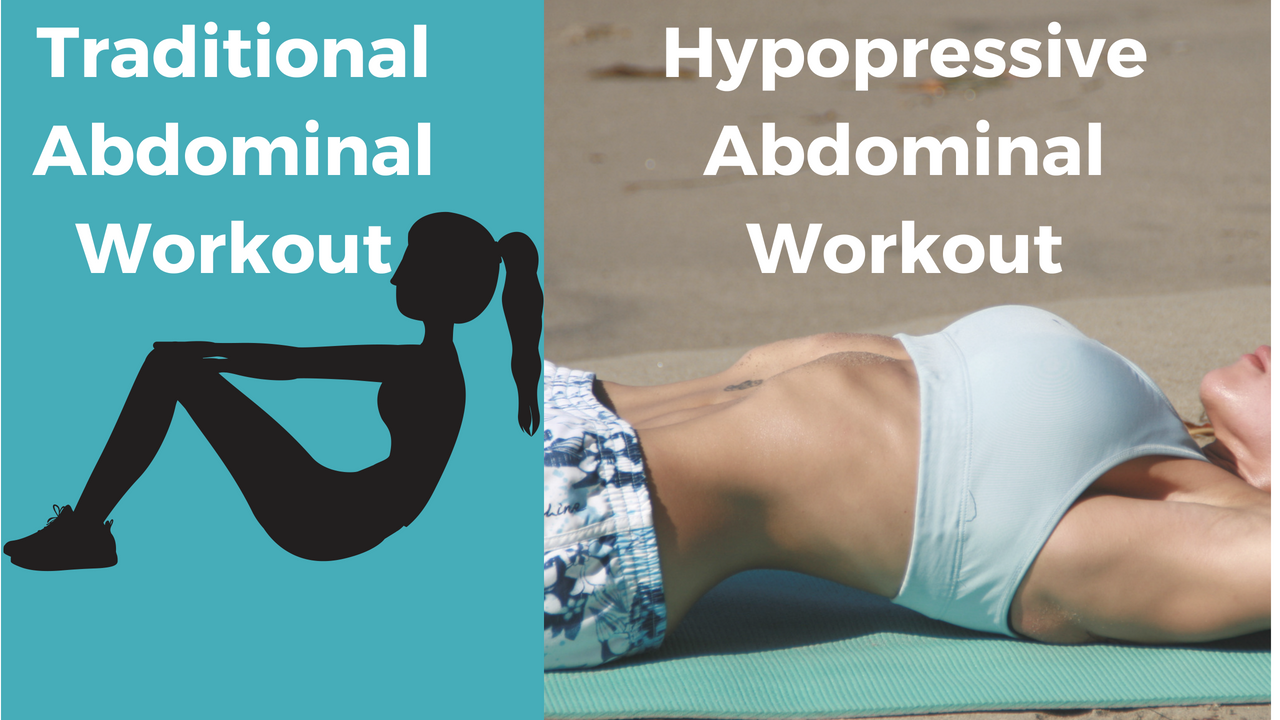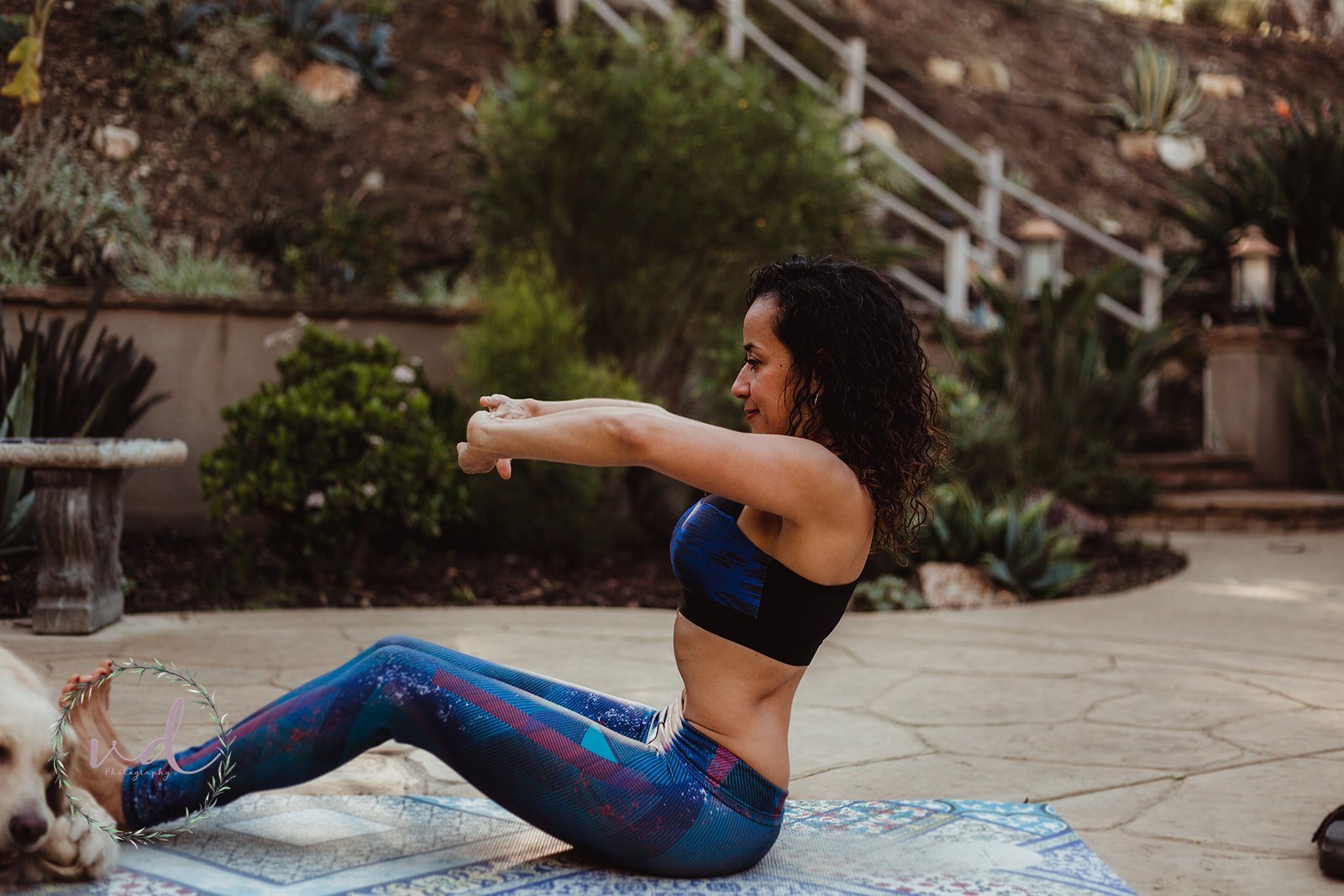Hypopressives are Postures and Breathing Techniques to Decrease
the Excess of Pressure in the Abdominal Cavity.
Some of the Benefits of Hypopressives Include:
- Flatten Your Tummy (No Crunches Needed).
- Prevent Back Pain.
- Shrink Waistline.
- Improve Postural Awareness.
- Decrease Pressure and Bloating in the Abdominal Cavity.
- Prevent Back Pain.
In This Blog, You Will Learn to Do Hypopressives the Correct Way!
Are you noticing your belly protruding these days? Do you pee a little when you cough, laugh, sneeze or lift things? Do you have pelvic discomfort? Is your sexual response diminished? Are you a bit shorter of breath than you used to be? Or do you just hate sit-ups? I know the feeling! I’ve experienced these issues myself and the Hypopressive Method has virtually eliminated all of these and more for me! It can do the same for you!
Or possibly you already doing Hypopressives? Are you following YouTube videos; but you don’t know if you are doing it right? Do you notice tightness around your rib cage when you do Hypopressives? Are you having hard time to feel the activation of your abdominal muscles and your pelvic floor? I’m here to help both beginners and more advanced practitioners to become competent and successful with Hypopressives.
Do You Know that this Amazing Method…
Can reset your tight and weak muscles, retrain the brain, remove the old habit, and correct muscle imbalances?
Traditional abdominal exercises only work on strengthening abdominal muscles and the muscles imbalances continue. Hypopressives will balance your muscles properly for better mobility and injury protection.
It is very important to understand the whole concept of Hypopressives in order to do it correctly, and safely.
I know You Have Tons of Questions About this Amazing Workout, I will Do my Best to Answer Them All!
Here We Go!
- What is Hypopressives? What is Apnea? Is it just the Postures?
It’s more than that! Hypopressives include manual therapy, integrity of the joints, assessment of range of motion, strength, and special tests to find imbalances.
- What Kind of Postures are Performed During Hypopressives?
Hypopressives include static and dynamic postures with breathing techniques to decrease the excess of pressure in the intra-abdominal cavity.
- Who Created this Method and What Was theReason?
This method was created by Doctor Marcel Caufriez in 1980’s. This method was created to rehabilitate pelvic floor in postpartum women. Now this method has becoming very popular in European Countries in fitness, wellness, and women’s health. It has been widely reported that Victoria’s Secret Models practice this method to keep their amazing bodies looking great, particularly after they give birth.
- What is the Difference Between Traditional Abdominals and Hypopressives?
Hypopressives activate the abdominal muscle tone and the intra-abdominal pressure decreases, that’s good! Traditional abdominals strengthen the abdominal muscles and the intra-abdominal pressure increases, that’s bad as this tends to bulge the belly outward when the abdominals are relaxed.
In this blog You can learn more about traditional abdominals and hypopressives

If you have a weak abdominal muscles and pelvic floor muscles, hypopressives will be the safest way to restore these muscles.
In general it is best to try to avoid crunches and sit ups, these traditional abdominal workout can contribute to weaken pelvic floor, back tightness, and back pain.
How Hypopressive Exercises Work
At the heart of hypopressive exercises is a sequence of postures combined with specialized breathing techniques, using your diaphragm to activate your postural muscles, abdominal muscles, and pelvic floor muscles, by reducing intra-abdominal pressure.
Contrary to exercises that focus on a specific muscle group (and put unnecessary pressure on your body), a hypopressive workout is a whole-body approach to improving your overall wellness.
That’s why it affects our bodies in so many positive ways. Performing these exercises will help:
- Activate your abdominal muscles
- Decrease the pressure in your thoracic, pelvic, and abdominal cavities
- Improve your respiratory system
- Increase the oxygen levels in your body
- Strengthen your pelvic floor muscles, abdominal muscles, and postural muscles.
- Correct muscle imbalances and restore muscle tone
- Reduce pain by decompressing the vertebral joint
- Improve posture
A hypopressive workout doesn’t strain your muscles; therefore, it can be safely added to a low-impact fitness program.
That’s why regular hypopressive exercise benefits new moms trying to get back to their pre-pregnancy bodies (after the six-week recovery period), athletes looking to improve their performance, and anybody who wants an alternative to traditional abdominal exercises.
Hypopressives are the way to go if you want a strong core and a flat tummy! But to enjoy the full benefits of this low-pressure workout, it’s important to get the hypopressive technique right from the start.
What are the Benefits of Hypopressives?
- Reduce the waistline perimeter.
- Prevent urinary incontinence.
- Reverse organ prolapse.
- Prevent diasti recti.
- Improve posture.
- Relieve back pain.
- Prevent inguinal, abdominal, lumbar hernias.
- Improve lung capacity.
- Improve sexual function.
- Prevent pelvic discomfort.
- Prevent constipation.
- Improve blood flow.
- Prevent or reduce swollen legs.
- Improve sleep.
- Reduce stress.
What are the Steps to Successfully Perform Hypopressives?
This method combine sequence of postures and breathing techniques to reach the maximal potential and benefits.
The success on doing hypopressives depends on learning this method from a healthcare professional who is certified by the Caufriez Concept who is the founder of the hypopressives.
To get started, you can learn Hypopressives to strengthen your core and pelvic floor! Follow this easy step, Just Subscribe to my Hypopressive Core 6-Video Series 1:
Posture During Hypopressives
The hypopressives are performed in different positions, standing, sitting, kneeling, half kneeling, on hands and knees, lying down on back and on stomach.

Here is a Sample from my;
“Hypopressive Core 6-Video Series 1”
Follow these Steps in order to Activate the Abdominal Muscle and Pelvic Floor :
- Head position: tuck your chin in (double chin).
- Eyes: gaze at your front at eye level.
- Shoulder: pull your arms down.
- Shoulder blades apart: Bring arms far from the body at 90 degrees (shoulder level) like you want to push two big columns far from you from your side.
- Hands: thumbs point toward your back.
- Bend elbows at 90 degrees angle, and rest your hands (index and middle finger)at hip level.
- Feet position: Feet hip-width apart.
- Center of Gravity: In standing micro bend your knees and leaned forward transferring more weight to your toes.
- Breath three times. Then in the last exhalation empty completely your lungs.
- Apnea: without breathing open rib cage and bring belly button in toward spine and up. Hold the apnea for at least 5 seconds (ideal is 15-25 seconds). Keeping the posture described above.
- Inhale one time, and exhale three times. Finally, the last exhalation should be the longest to calm your nervous system and to help you with your recovery.
- Repeat the hypopressive exercise, combined with the posture three times.
Breathing
The proper breathing technique used during the hypopressives help to activate and relax the right muscles. As a result, the diaphragm relaxed and the rib cage opens. In addition, if the diaphragm is relaxed, the organs will have more room to ascend.
In conclusion, over time and training, the pelvic floor and abdominal muscles will have less pressure from the organs, and these muscles will be able to work properly.
List of Hypopressive Exercises
- The Basic Exercise
Every hypopressive training starts here. Take time to learn the posture sequence before moving on to more complex exercises. Learn to connect to your core and pelvic floor:
- Improve your posture first, relax the tight muscles, and learn to activate the right muscles.
- Keep your back straight and relaxed, as if you are trying to grow taller.
- Look ahead.
- Bend your chin down to stretch your neck and spine. Breathe through your nose as you expand your abdomen.
- Breathe out until your belly contracts. Hold this position for a few seconds without breathing.
- Breathe into your lungs, then return to normal breathing.
You can perform this technique in different postures.
- Lying Down
Lie on your back with your legs bent and your arms next to your body. Keep your chin down and perform “The basic exercise” with emphasis on feeling the contraction of your abdominal muscles and pelvic floor while you hold your breath.
- Sitting
Sit in a chair or on the floor with your legs bent, your hands on your knees. Lean forward, microbend your elbows, and tuck your chin in. From this position, repeat “The basic exercise.” Keep in mind to bring your belly button toward the spine. Feel how your abdominal muscle and pelvic floor contract while holding your breath.
- Kneeling
Kneel on the floor with your arms extended in front of you. Elongate your back, tuck your chin in, and lean forward. Release all the air from your lungs, feel the contraction of your abdominal muscles. Hold your breath for as long as possible, then relax and repeat.
- Standing
Stand with your feet apart and your knees bent. Place your hands on your thighs. Lean forward, and feel the weight of your body fall toward your toes. Start the breathing exercises.
- Plank
Perform a standard plank exercise while repeating the above steps of “basic exercise.”
What is the Reason of Not Being able to Open the Rib Cage During an Hypopressive Exercise?
The diaphragm is very emotional and tenses up with situations of excitement, fear, happiness, or sadness. This tension in the diaphragm can interfere with the Parasympathetic System Function, by elevating the stress level. The Parasympathetic System’s job is keeping the body-mind calm and relaxed, but it can’t if the diaphragm is tight.
How Can you Relax the Diaphragm?
The diaphragm can be relaxed with manual therapy or with abdominal breathing techniques as follow:
- Lye down on your back, place a small pillow under your head and knees.
- Put your R hand on your belly, below the rib cage.
- Put your left hand on your heart.
- Breath in slowly through your nose and feel how your stomach push out against you right hand. in addition, the hand on your chest should stay still.
- Breath out through your nose slowly until your abdominal muscle relax and your right hand fall inward through the back. The left hand should remain still.
- Practice this breathing 5 minutes a day.
- Make sure to make the exhales longer than the inhales (6 seconds exhale, 4 seconds inhale). Longer exhalations slow down the heart rate, relax, the diaphragm, calm the body, and mind.
Why is so Important to do Apnea During Hypopressives?
Apnea means without breathing. This breathing technique creates the proper postural changes to produce an effective outcome with hypopressives. Apnea decreases the excess of pressure in the intra-abdominal cavity.
This breathing technique activates the Parasympathetic System and the diaphragm relax. As a result, the rib cage opens and the organ ascend with a suction effect.
For instance, the pelvic floor muscle and abdominals muscles are relieve from the excess pressure of the organs. Now the pelvic floor and abdominal muscles are able to work properly to improve any functional limitations.
How Do you Know if You are Doing a Correct Apnea During Hypopressive Exercise?
It is very important to breath at least three times before the apnea.
The last exhalation should empty the lungs completely.
Then you hold your breath or do an apnea as long as you can hold it. The goal is between 15 to 25 seconds.
Breath in after the apnea, and then breathe out 3 consecutive times. The last exhalation should be the longest.
How Do you Know if You are Doing Apnea the Right Way?
Face a mirror and look for the following signs:
Neck: the collar bone look more prominent
Rib cage: The rib cage is more notorious
Belly Button: moves toward spine
How Often Should I Do Hypopressives?
Three times a week for at least 6 weeks is indicated to obtain maximum benefits.
The reason of doing hypopressives three times a week is to allow the brain to reset and learn the new task during the rest day.
The body needs six weeks to heal, and the brain needs 6 weeks to learn a new task. You will be familiar with the sequence after 6 weeks. As a result, your brain will learn to memorize each step, your body will feel stronger, and you will have an amazing posture.
If you stop hypopressives at this time, your abdominal, and pelvic floor muscles will forget and weakness will appear.
What are hypopressive exercises for?
Hypopressive exercises were initially developed as an alternative to traditional pelvic floor muscle training.
While they are indeed great for strengthening your pelvic floor muscles, they have several additional benefits: they also help increase athletic performance, relieve back pain, improve core strength, recover from childbirth and achieve a toned, flat tummy!
Are hypopressive exercises effective?
Yes! However, you must learn the hypopressive posture sequence first, before learning the hypopressive breathing. It’s also very important to perform these exercises regularly to form a habit. For best results, start practicing for 20-30 minutes three times a week. After six weeks, you can increase this to 20 minutes a day.
Is Hypopressive exercise good for you?
Absolutely! If you learn the hypopressive technique correctly, and if there are no medical contraindications (if you are not pregnant, fresh postpartum, or injured), then this technique only has benefits.
When in doubt, seek clearance from your healthcare provider before starting with hypopressive breathing exercises.
How long does it take for hypopressive to work?
It all depends on your motivation. After learning hypopressive exercises, you can move on to more complex exercises right away. Start practicing hypopressives a few times a week for about six weeks before moving on to a daily routine. If you follow this schedule, you should see results within 1-2 months.
How can the hypopressive method help treat postpartum issues in women?
Hypopressives are considered effective in correcting some changes in pregnancy that negatively affect the spine, abdominal muscles, and pelvic floor.
As opposed to traditional workouts, which often only make postpartum problems worse, hypopressives are a proven way to help manage urinary incontinence, diastasis recti, pelvic organ prolapse and help achieve a better posture, improved breathing, and reduced back pain.
I am Just Curious..
Do you Brush your Teeth Every day? Why? To Have a Healthy Smile!
It’s the same with hypopressives, you want a healthy body and this is only possible with commitment, love for yourself and dedication. I know you can do it!
Please Read This Before Starting Hypopressives!
If you are dealing with one or more conditions or have doubts, consult with your primary doctor or Hypopressive Specialist first.
Don’t Start Hypopressive if You Have:
- High blood pressure.
- Pregnancy, during the first trimester is contraindicated. Hypopressives can be performed during pregnancy after the third trimester ONLY with a specialized hypopressive professional. What could happen if you do hypopressives during pregnancy without the right guidance? A early labor may occur.
- Postpartum. The body needs time to heal and recover. Total recovery time varies from person to person. The most traditional advice is to wait 6 weeks before returning to any physical activity. Why Do you have to wait six weeks? One of the main reason is the uterus needs time to return to its normal size. The uterus shrinks from 2 ½ pounds to about 2 ½ ounces in 6 weeks after child birth.
- Pain or discomfort in hips, knees, and shoulders. Hypopressives can be performed with modifications and precautions to prevent pain, and excess of pressure in these joints.
How Do you Do Hypopressives?
Are You Ready to Start Your Hypopressive Practice? Let’s Do This!
In this video I Show you Three Hypopressives Exercises You Can Do While Resting in Your Back.
Take your time to learn this sequence.
Focus on learning the posture first and then work on learning the apnea.
Hold the apnea as long as you are comfortable.
Increase the apnea time gradually.
Repeat each exercise three times.
Feel free to combine this sequence with your current exercise program.
I Have a Question for You!
Would You Like a Full Six Videos of Hypopressives Core Series 1 that Can Take You from Zero Knowledge on Hypopressives to Accomplished Level One Practitioner?
Exclusive Pre-Launch Sale. Please see video below to learn more.
Are You Ready to Start
Yes you are!!
Sign up Now
Doctor Alexandra Chaux, DPT
Doctor of Physical Therapy

